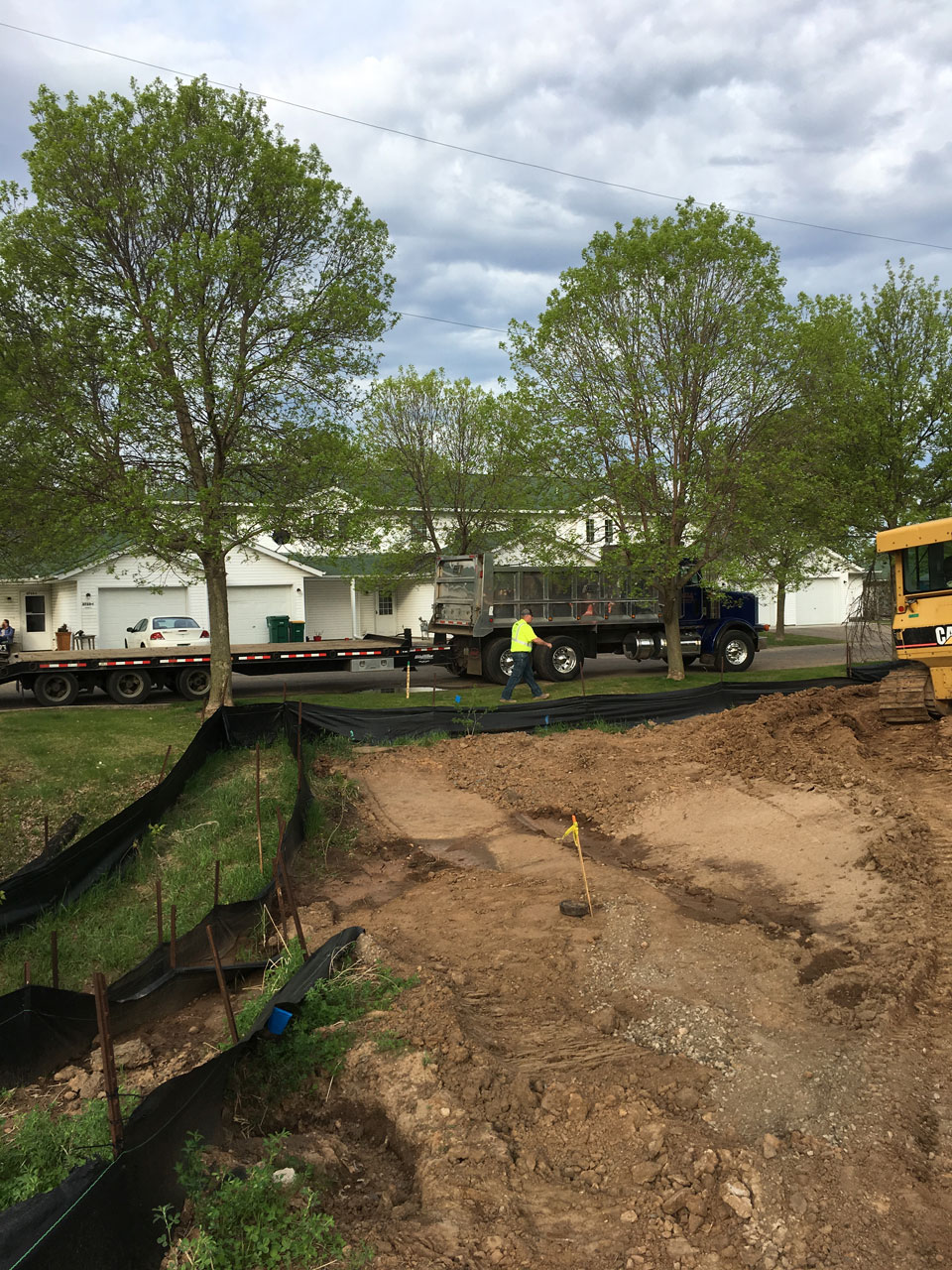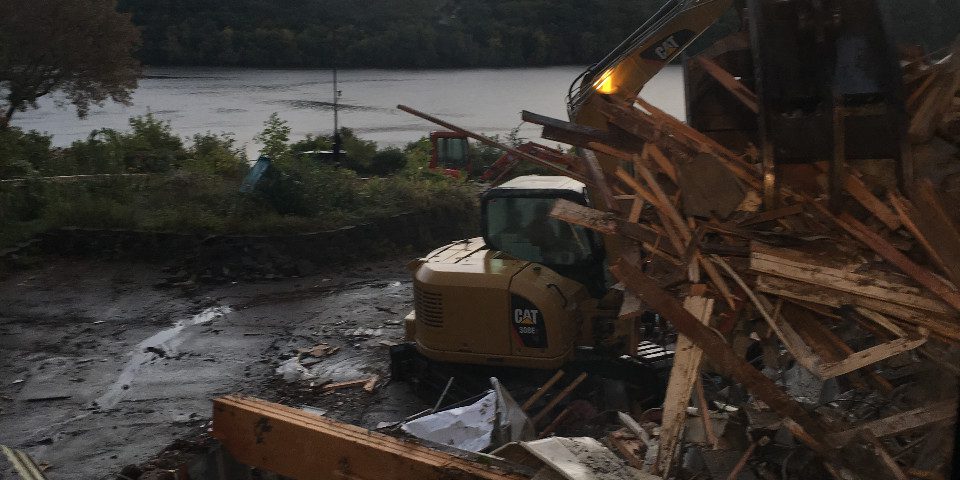
Hire Professional Excavation Contractors
January 31, 2024
Five Reasons Why You Should Hire an Excavation Contractor
April 1, 2024Residential Demolition

Each step, from planning to demolition and cleanup after the demolition, requires efficient execution and careful planning.
Preparing Demolition and Segmenting
To ensure a safe and efficient demolition, several steps and precautions must be taken before the project begins. This phase involves identifying and containing dangerous materials as well as salvaging and recycling reusable materials.
Identifying, Containing and Managing Hazardous Materials
During the preparation phase, it is important to identify and contain any hazardous materials that may be present. Asbestos, lead paint and mold are some of the most common hazardous materials found in residential building.
- Asbestos: Used in roofing, siding, and insulation materials. When asbestos becomes airborne, it can be dangerous. If asbestos is found during demolition, a professional must be called in to inspect and remove it.
- Lead paint: Found on structures built before 1978 lead is a serious risk to children. Lead paint must be inspected and properly removed to ensure the safety of demolition.
- Mold: The mold can be harmful for the environment, and it can cause health problems. Prior to demolition, the areas infested with mold should be treated by a professional. This will prevent the spread harmful spores throughout the project.
Recycling and Salvaging Reusable Materials
The next step in removing hazardous materials is to salvage, and then recycle the materials. Salvable materials include wood, metals, glass and fixtures.
- Wood: Floorings, beams and doors can be repurposed for other construction projects.
- Metal: Roof materials, pipes, and appliances are all recyclable.
- Windows: Windows, and other glass products can be recycled or repurposed into new products.
- Fixtures Sinks and toilets can be re-used in other projects to reduce waste and conserve resources.
A successful demolition project requires preparation. By segmenting and preparing properly for demolition, you can address potential hazards and salvage and recycle valuable resources.
Techniques and Methodologies for Home Demolition
There are many methods and techniques that can be used to safely dismantle residential structures. This section provides an overview of the three most common methods.
Mechanical Demolition
Mechanical demolition is a common way to dismantle homes and smaller buildings. Heavy machinery, such as bulldozers and wrecking ball, is used to destroy the structure.
Selective Demolition
Selective demolition, also known as deconstruction or selective dismantling, is a process that carefully dismantles a building piece by piece in order to recover reusable materials and reduce waste. This method requires a lot of labor and precision.
Explosive Demolition
Implosion is the technique of using explosives to bring a structure down. This method is used to strategically weaken the support system of a building, which will cause it to collapse. The explosive demolition method is used to destroy large buildings or tall structures where other methods are unsafe or unpractical.
Cleaning up after demolition and evaluating performance
The cleanup process after a residential demolition is crucial to ensure site safety and reduce environmental impact. This section will describe the post-demolition cleaning process and assess the effectiveness of each step.
Debris removal and disposal
The first step to cleanup after demolition is removal of debris, and its disposal. As they remove the debris, contractors should sort out and separate materials. Some materials may be recyclable, while others will need to go in a landfill. The primary objectives of debris removal include:
- Maximizing the re-use and recycling materials
- Reduce the amount of waste that is sent to landfills
- Reduce the environmental impact through demolition
These are some common materials with their disposal methods.
- Concrete – Recycle
- Metals Recycle
- Plastics – Recycle or Landfill?
- Wood Furniture: Landfill or Recycle?
Demolition professionals’ role and legal guidelines
The demolition contractor’s responsibility is to demolish residential buildings in a safe and efficient manner. The contractor must have the knowledge and expertise to deal with complex demolition situations. They also need to be experienced in the field.
A demolition contractor’s main objective is to reduce the risks and hazards that may be associated with the project. This includes protecting structures nearby and ensuring worker and public safety.
In order to execute successfully residential demolitions , a contractor must be licensed. It gives homeowners assurance that the contractor has the required qualifications and adheres strictly to all regulations.
It is also essential that the contractor uses appropriate equipment for every project. For example, excavators equipped with attachments are ideal for removing debris and safely destroying structures.
must also adhere to environmental regulations when demolishing residential structures . It may be necessary to implement good practices in order to protect the public and the environment. This includes identifying, removing, and managing harmful materials that are present within structures.
Permits, Licenses and the Procurement thereof
Before starting any demolition project it is important that the contractor obtains the required permits from the local authorities.
These permits are legal authorizations for the contractor to begin the demolition project. They also ensure that local building codes and guidelines are followed. The contractor also needs to maintain his license and insurance during the entire demolition project.
It is important to not only meet the legal requirements, but to also give homeowners peace of mind knowing that their project will be in good hands. Demolition professionals are essential for the efficient and safe execution of residential demolitions.
With the help of reputable firms, homeowners can complete their demolition projects successfully by adhering to the legal guidelines, obtaining permits and hiring licensed and insured contractors. Call Bell Excavating/Bill Wolfe Excavating to find out more.
